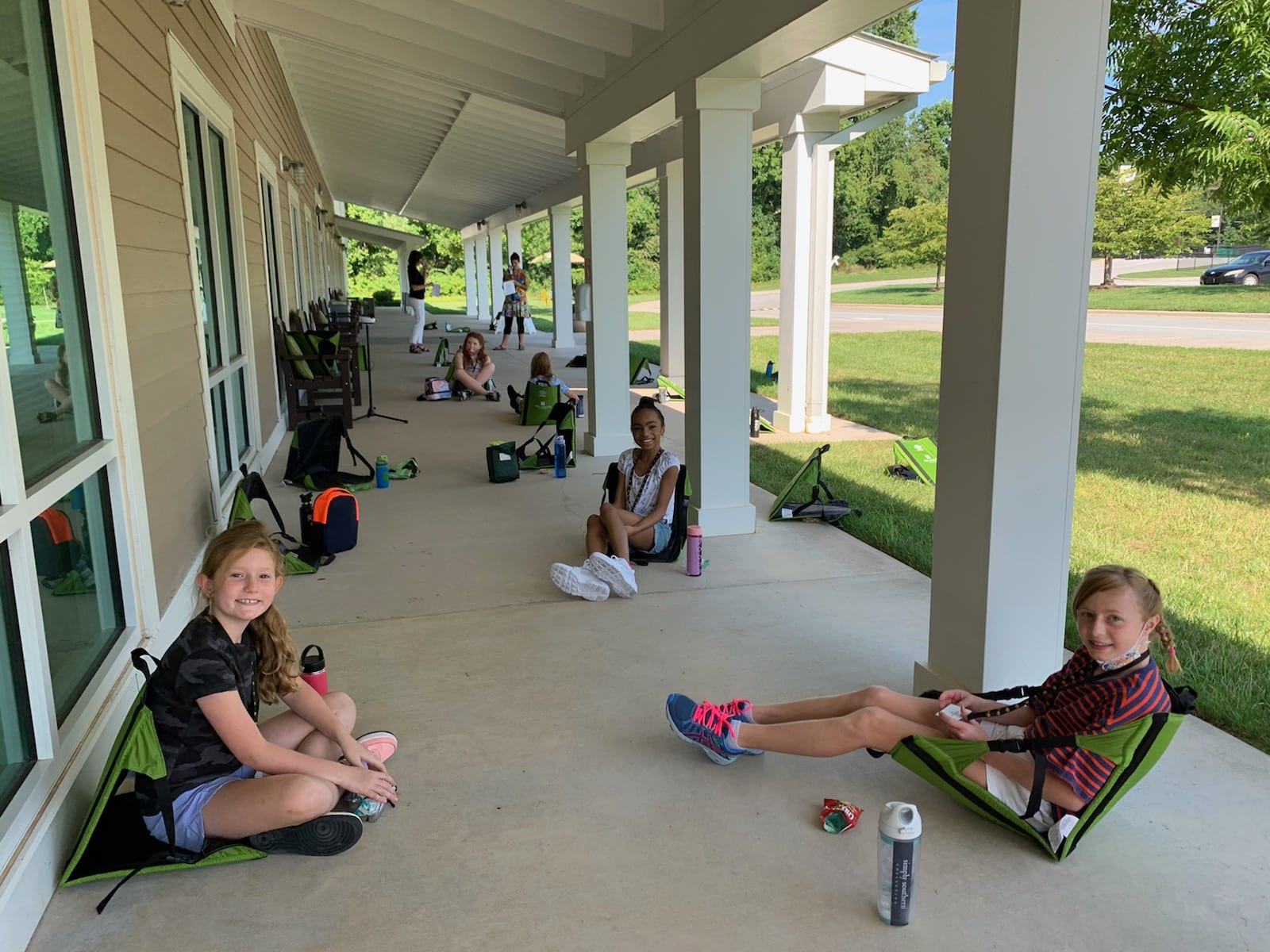12/07/2020 by CS&A Guest |
Thought Leadership
Putting Students at the Heart of Problem Solving
by: Tracie Catlett, head of school at Greensboro Day School

How many students could we safely seat six feet apart in the classroom? How can we best utilize outdoors for class, breaks, and lunch? These were questions I asked students who volunteered to meet with me on Zoom one hot July day. These eager middle and upper school students had no problem masking up and jumping in. The Zoom meeting was filled with ideas and, eventually, campus visits, which included a lot of modeling and measuring. They attended a webinar on the Rosner Model (they were the only students in the Zoom room!), they measured and marked the classroom floors with tape, and they posted maximum occupancy signs on each classroom door.
What did the teachers think about the set-up? Do they have enough space to move and teach? The lesson on empathy was the next summer Zoom topic. It was time for the users of the room, the teachers and students, to have a voice. After soliciting feedback from the teachers, the students understood a little more about the empathy part of design thinking. Going back to the drawing board left classrooms ready for teachers and students. Mission accomplished! Safety, comfort, and flexibility won!
How can we learn outside with limited outdoor seating? It didn’t take long for one of the seniors to suggest an idea that would eventually spread to other NAIS schools: the Crazy Creek Chair. These chairs are used each year here at Greensboro Day School when students participate in the junior backpacking trip — an Appalachian Mountain backpacking tradition for many years. The chairs are lightweight, provide back support and comfort, and can be transported anywhere. How can we make the chairs available to everyone?

Middle School students enjoying a break in their Crazy Creek Chairs
In challenging economic times and with roughly 28% of our students on financial aid, we couldn’t add this chair to the school supply list. Building on our new Corporate Friends program established by the Director of Strategic Initiatives, it didn’t take long for our new Director of Advancement to secure a corporate sponsor to purchase the chairs for all kindergarten through 12th-grade students. He took the lead with the students after two weeks on the job, and together, they created a safe plan for seating inside and outside the classroom.
Connection with other heads of school was important during this crisis. We leaned on each other to share ideas, lessons learned and engage in conversation. I used this space to share the Crazy Creek chair idea, and away it went to the Kent School in Maryland.
Once school opened in August, it was time to tackle new problems. Another effort to put students at the heart of problem solving was to create a Challenges, Solutions, Ideas (CSI) team made up of students in grades 4-12. To sort through volunteers, we asked them why they wanted to join the CSI student team.
These answers shape a narrative about the importance students place on learning on-campus and in person: they are deeply invested in their safety and their learning.
- I am grateful that we get to be on campus during these unpredictable times, and I absolutely love it here, and I want to help make any improvements to make sure we are safe and still having fun!
- I want to join the CSI student team because I aspire to contribute more to our community. I'm currently a remote student, which prohibits me from participating in most school events. However, I'd love to be on a part of this team because I like problem solving, and I want to make this school year easier for everyone. I want to stay informed about what's going on and offer my perspective as a remote learner. The agenda topics are relevant and urgent; I would like to be part of the process to figure all of these challenges out.
- I want to join the CSI team because I want to help solve real-life problems here at GDS. Now is the perfect time because COVID-19 had caused lots of uncertainty, creating problems that need to be solved. I enjoy problem solving and being challenged and feel like I would be a perfect fit for the team. I would love to be a part of the team and share my insights to better the GDS community.
- I would love more than anything to be a part of the solution. I know that these things drive us crazy in these challenging times, but I want to help regardless.
- I would like to join the CSI team because I think I have some great ideas to bring to the table. I am very interested in making meaningful changes to our school and making this new normal the best it can be. I greatly appreciate our teachers and administrators implementing policies into the school that helps with social distancing, but I think that students’ input can greatly benefit our school.
As part of the ongoing student involvement, we brought a continuing challenge to the students — consistent social distancing. The session began by students framing the problem and asking questions. Ultimately the group organized their thinking into a PowerPoint presentation and shared their findings with the COVID Response Team, responsible for managing the school’s pandemic response.
The problem:
Middle School —
- Recess: how to social distance during sports?
Upper School —
- All common spaces are crowded; outdoor spaces are unreasonable to mark entirely. How do we encourage/enforce social distancing outside of classrooms?
The potential solutions:
- Educational assemblies to refresh students on the severity of the crisis an the necessity to properly socially distance.
- One long assembly to remind students of why this still matters, frequent short education opportunities during assemblies.
- Consider disciplinary options.
- Educate students about the increased risk as winter comes and cases rise.
- Explain how we can better understand why people need to social distance, how they are incorrectly social distancing, and how they can improve upon what they are doing.
- Lunch: sign up sheet versus room assignment so you can be with people you want to be with because lunch is supposed to be fun.
- Remind students that other peers, parents, and teachers can get sick and may be immunocompromised, and that the parents and grandparents of students are affected by every student's actions.
- Create an assembly with ½ discussion, ½ information:
- Explain, “Why this plan?:” education for both teachers and students to attempt to reinvigorate all to properly social distance and discuss social distancing in a peaceful and informed manner of their own accord before strict disciplinary action is considered.
It’s now winter, and GDS continues to apply an iterative approach to solving problems. We also remain committed to engaging students in the process of designing solutions. As administrators, we don’t understand the isolation of distance learning for six months, we aren’t the ones carrying the heavy backpacks around, and it’s been far too long since many of us played kickball or tag with our friends on a field.
Leave a Comment
0 Comments
There are no comments on this blog entry.